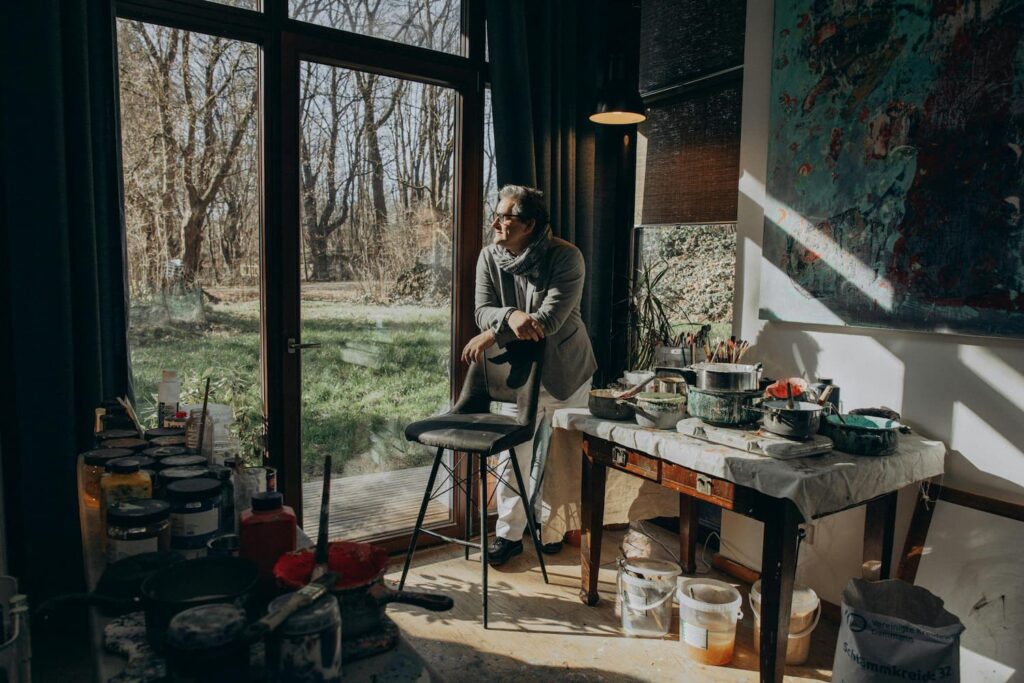Every artist hits this problem: you want a style people recognize, but you don’t want it to feel like a trap. You want someone to see your work and say, “That’s theirs.” But you also want to try new things and keep making stuff that surprises you.
The world rewards the same ideas. Galleries, clients, and social media like things they can recognize. Predictability sells. But your creative side wants to wander. You want to test new ideas, subjects, and tools. Doing that sometimes feels like betraying your brand.
The best artists treat style like a frame, not a cage. It holds their work together but still leaves room to play.
What Style Really Means
Many people think style means “make everything look the same.” It doesn’t. Style is the feeling and choices behind your work.
Look at big names: Picasso’s early and late work look different, but you can still tell it’s his. Miyazaki’s movies aren’t identical, but they share a heart. That’s style; a steady voice. Your style shows in things you keep doing without thinking: the light you like, the way you place shapes, the textures you favour. Those are the clues to your real voice.
Creative industries like entertainment and casino design have figured this out. Well-designed online casino platforms, some found at polskie-kasyno-online.pl, have a clear, recognizable look, but they’re always evolving, updating their payment methods, adding new games, and changing layouts.
Their consistency isn’t about everything looking the same; it’s about delivering a familiar feeling. The same goes for luxury casino resorts or entertainment venues. They maintain a certain mood and quality even when the decor or themes change.
Your “brand” is your creative fingerprint; your values, your perspective, and the quality you bring to everything you make. If you force yourself to copy a look, you stop being honest. Style grows when you follow your instincts, not when you follow rules.
Why Limits Can Free You
Limits make creativity easier. If everything is possible, you freeze up. Give yourself a few rules and let the ideas flow.
Try small limits that excite you: always use one unusual colour like fulvous, always include a certain shape, or stick to one brush technique for a month. Those rules give your work unity without making it boring. Pick rules that feel fun. If a rule feels like homework, ditch it. The right limit should push you, not block you.
Make your Work Recognizable Without Repeating It
Artists like Picasso have a clear voice and repeat little things, not whole pictures. It might be a brushstroke, a pattern, or how you show light. Those small repeats are like your creative words. Mix them up so your pieces feel related but not the same.
Look at your last ten works. What shows up again and again? That’s your natural style. Use it on purpose. You want people to say, “That feels like them,” not “That’s the same as last time.”
Balance Growth and the Business Side

Consistency helps you sell. Galleries and customers like recognizable product. But if you only do what sells, you burn out. Try having two paths. One is your commercial work, which includes the pieces that people buy and expect. The other is your playground, which includes private projects where you mess up, experiment, and have fun. Those experiments feed your public work later. You don’t have to show everything. That secret space keeps your curiosity alive.
Style is a Journey, Not a Finish Line
Style isn’t something you find and then stop. Look at any great artist and how their work evolves, but still feels like them. Keep refining what feels true while trying new things. Hold on to the core of who you are, but let the rest change. Trust that your work will still be yours even as it grows. That’s how you keep a consistent voice without losing the part of you that wants to explore.